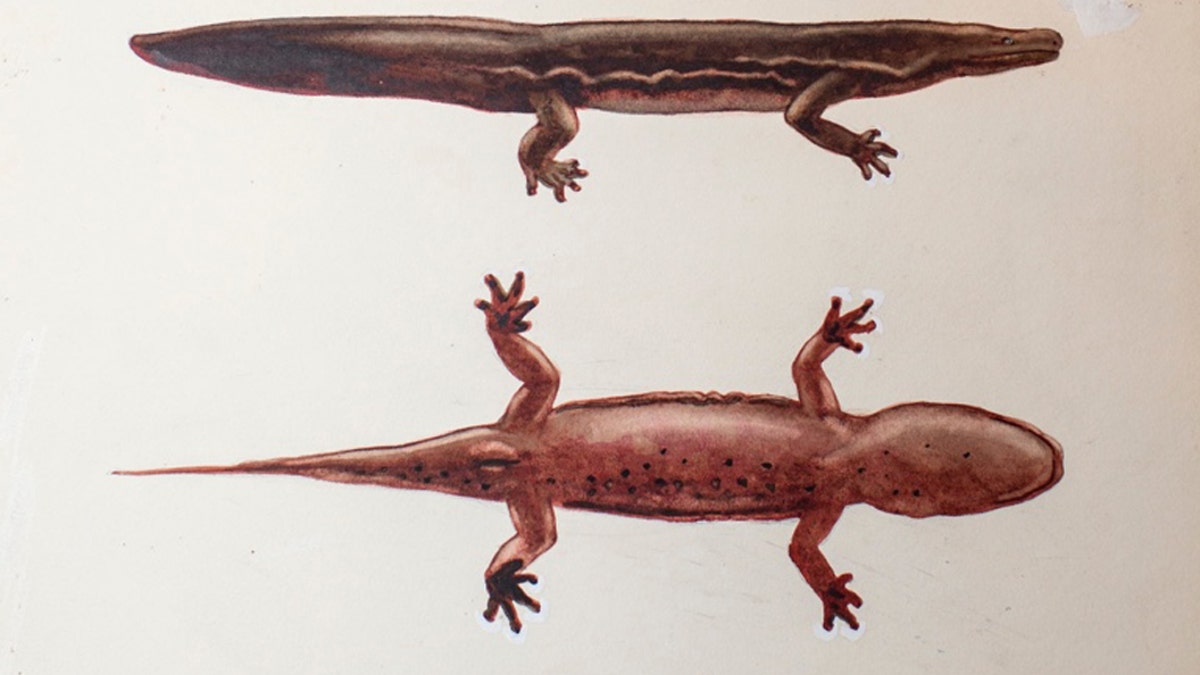Fox News Flash top headlines for Sept. 20
Fox News Flash top headlines for Sept. 20 are here. Check out what's clicking on Foxnews.com
A new species of Chinese giant salamander has been identified as the world’s largest amphibian, measuring at a whopping 5 feet, 9 inches.
The salamander, Andrias sligoli, is one of three newly identified species. Until these new findings, it was long believed only one species of Chinese giant salamander existed. However, researchers from the Zoological Society of London and London’s Natural History Museum weren’t so sure about that, given the dramatic landscape of their home.
“This species occupied rather distinct ranges within China which are separated by physical barriers, such as river systems and mountain ranges, [which] tends to cause populations to become isolated from each other and, over time, to diverge and become separate species,” study co-author Dr. Melissa Marr of London’s Natural History Museum told Fox News in an interview. “Therefore, we speculated that there may, in fact, be more than one species of Chinese giant salamander.”

New giant salamander species - Andrias sligoi - painting from ZSL archives. (Credit: ZSL)
ANCIENT BRITONS HAD GIANT WORMS IN THEIR KIDNEYS, STUDY SHOWS
To prove their hypothesis, the team analyzed DNA from 17 historical museum specimens collected in the early 20th century and were able to create an evolutionary tree that split off between 2.4 and 3.1 million years ago, coinciding with a period where mountains were springing up thanks to the rising of the Tibetan Plateau. They found that there were three distinct groups which represented different species, Andrius davidianus, from the Yangtze River region, the aforementioned Andrius sligoli of the Pearl River area and one yet-to-be-named species from the Huangshan territory.
The biggest Chinese giant salamander was discovered back in the 1920s in the Guizhou Province, which is where A. sligoli lives. Of the world’s 8,000 amphibian species, this is the largest on record. The A. sligoli specimen used in the study previously lived at the London zoo, where it survived for 20 years.
Marr and her team believe that there may be even more species of Chinese giant salamander but the window for finding specimens in the wild is rapidly closing. The creatures are used in traditional medicine but mostly for food in China, creating a demand that wild populations cannot sustain. Two species of the salamanders are now critically endangered, having almost been driven to extinction from poaching and competition from the third species.
“Millions of captive giant salamanders exist within the farming industry, but these represent only one species – Andrias davidianus,” Marr explained. “Intentional and accidental releases of this species have led to A. davidianus replacing other species in the wild, [bringing] the risk of disease spread, and competition and hybridization with wild populations.”
Marr believes that creating targeted conservation measures for each individual species will give them the best chance of survival in the long term.
“Locating and establishing how many of these species remain in the wild is a key first step to their conservation, followed by conservation measures that may include captive breeding programs to increase their numbers,” she said. “Halting poor farming practices and addressing the issue of poaching will also be crucial.”
The study can be found in the journal Ecology and Evolution.





















